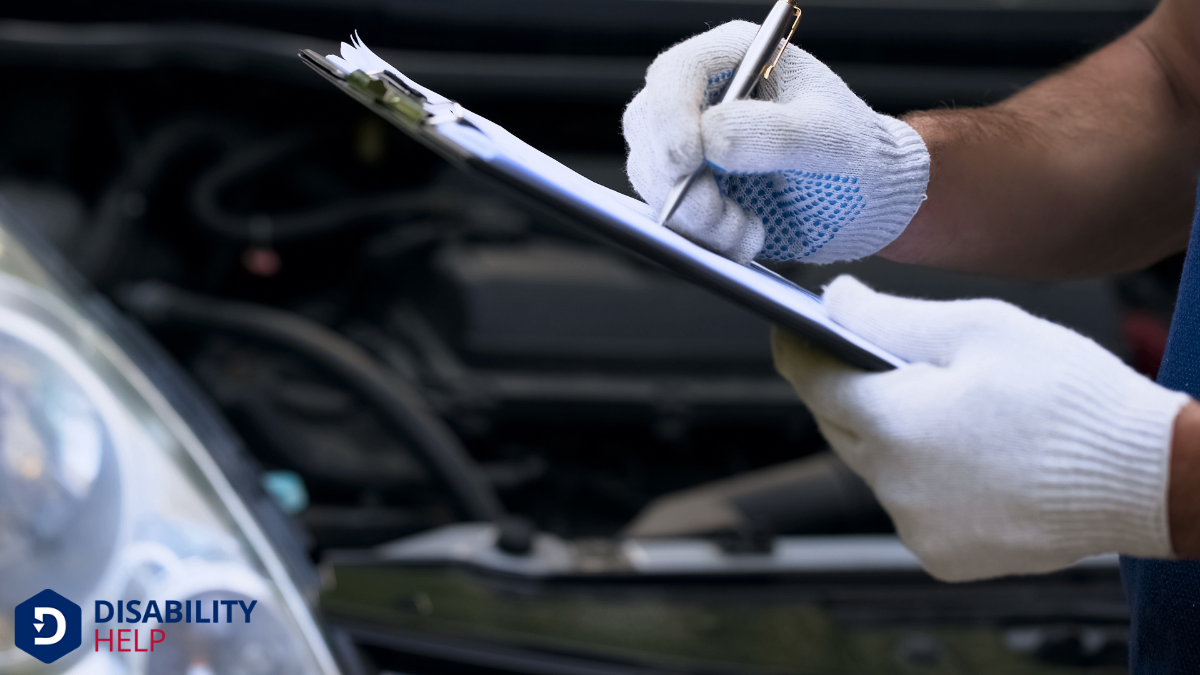Let's explore the cost of converting vehicles for wheelchair accessibilityThe design of products, devices, services, or environments to be usable by people with disabilities..... From ramps and lifts to lowered floors and automatic doors, there are many options and price points to take into account. With expenses ranging from $1,500 to $12,000 or more, it's vital to plan accordingly. We'll look into different vehicle types, modifications, and even funding options. How do we navigate these choices to find the right fit for our needs?
Key Takeaways
- Wheelchair ramps or lifts generally cost between $1,500 and $4,000 for installation.
- Lowering the vehicle's floor for accessibility can range from $8,000 to $12,000.
- Installing securing systems for wheelchairs costs an additional $500 to $2,000.
- Automatic doors add approximately $1,000 to $4,000 to the conversion expenses.
- Total conversion costs vary based on vehicle type and modification needs.
Types of Vehicles Suitable for Conversion
When considering vehicle conversions for wheelchair accessibility, it's important to know which types of vehicles are best suited for this transformation.
We should focus on minivans, full-size vans, and some SUVs. Minivans like the Chrysler Pacifica or Toyota Sienna are popular because they offer ample space and lower floors, making them easier to convert. Full-size vans provide even more room, which is ideal for larger wheelchairs or additional passengers.
While some SUVs can be converted, they often require more extensive modifications due to their higher floors.
Understanding our needs is key. Do we prioritize space, or is maneuverability more important? Each vehicle type offers different benefits.
Important Modifications and Their Costs

Choosing the right vehicle sets the stage for successful wheelchair accessibility, but understanding the necessary modifications and their costs is just as important.
We need to take into account key adjustments like installing a wheelchair rampA sloped surface that enables wheelchair users to access buildings or other areas with a height diff... or lift, which typically costs between $1,500 and $4,000. Lowering the floor is another major modification, often ranging from $8,000 to $12,000.
Let's not forget the importance of securing systems, which can add $500 to $2,000 to our budget. Additionally, we should think about automatic doors, costing around $1,000 to $4,000, to guarantee ease of access.
Each modification has its unique cost, but when combined, they provide a seamless experience. By budgeting for these essential changes, we guarantee our vehicle transforms into a truly accessible one.
New vs. Used Equipment: Pros and Cons
While considering wheelchair accessibility, deciding between new and used equipment is essential. New equipment offers the latest technology and often comes with a warranty, providing peace of mind. However, it usually comes at a higher price.
On the other hand, used equipment can be more budget-friendly, allowing us to allocate funds elsewhere. But, it may lack the latest features and could have a shorter lifespan due to wear and tear.
When choosing, we should assess our priorities: is cutting-edge technology more important, or is cost savings a priority?
Additionally, inspecting used equipment thoroughly and understanding its history can help us make an informed decision. Balancing these factors guarantees we select the best option for our needs and financial situation.
Additional Features and Their Impact on Price
When we think about converting a vehicle for wheelchair accessibility, we can't overlook how additional features like power lift options, interior seating modifications, and advanced safety features can affect the price.
These enhancements not only boost convenience and comfort but also come with varying costs that we need to evaluate.
Let's explore how each feature impacts our overall budget.
Power Lift Options
Power lift options greatly influence the overall cost of converting a vehicle for wheelchair accessibility. When considering these options, we need to weigh the benefits against the price.
Power lifts provide ease and independence for users, allowing for seamless entry and exit. They're available in various types, such as platform lifts or under-vehicle lifts, each catering to different needs and vehicle types.
The choice of lift impacts installation complexity and costs, with high-quality models generally costing more due to advanced technology and durability.
It's essential to evaluate our specific needs and budget. By doing so, we guarantee the selected power lift enhances our vehicle's accessibility without unnecessary expenses.
Prioritize a reliable lift that aligns with our daily routines and use cases.
Interior Seating Modifications
To maximize accessibility and comfort, interior seating modifications in a vehicle play an essential role, often adding to the overall expense of a wheelchair-accessible conversion.
When we think about ensuring ease of use, rotating or removable seats can make a significant difference. These features allow for smooth shifts between the wheelchair and vehicle seat, enhancing the travel experience.
Additionally, flexible seating configurations accommodate different needs, whether it's more space for the wheelchair user or for additional passengers.
We should consider that these modifications can vary in cost based on complexity and vehicle type. While they might increase the initial investment, the benefits of personalized comfort and convenience are priceless.
Understanding these options helps us make informed decisions that align with our specific needs.
Advanced Safety Features
Although technology continuously evolves, advanced safety features have become indispensable in wheelchair-accessible vehicles. We recognize that ensuring safety for everyone on board is a top priority.
Features like adaptive cruise control, lane departure warnings, and blind-spot monitoring can greatly enhance the driving experience. These technologies not only protect us but also provide peace of mind as they help prevent accidents.
However, these features do come with a price. Adding such advanced safety options to a conversion can raise the total cost.
It's important for us to weigh the benefits against the additional expense. While they might increase the initial investment, the long-term safety and peace of mind they offer often justify the cost.
Let's remember, investing in safety is never a wasted expense.
Financial Assistance and Funding Options

Steering through the financial aspects of converting a vehicle for wheelchair accessibility can feel overwhelming, but there are several funding options available to ease the burden.
Let's explore these opportunities together. We can tap into resources like government grants, nonprofit organizations, and special financing programs designed specifically for mobility solutions.
Many states offer assistance through vocational rehabilitationServices that help individuals with disabilities prepare for, obtain, and maintain employment. services, which might cover part of the conversion cost. Additionally, some charitable organizations provide financial aid or low-interest loans to individuals in need.
It's important to research these options thoroughly and reach out to local agencies that specialize in disability support.
Tips for Choosing the Right Conversion Provider
When choosing a conversion provider, it's essential that we check their credentials to guarantee they're qualified and trustworthy.
We should also compare their service options to find the best fit for our needs and budget.
Let's take the time to make informed decisions that will provide safety and comfort in our accessible vehicle.
Provider Credentials Matter
Choosing the right conversion provider is essential because it directly impacts the safety and functionality of a wheelchair-accessible vehicle. We should focus on the provider's credentials to guarantee they meet all industry standards.
Certified providers have undergone rigorous training, demonstrating their expertise and commitment to quality. Let's look for certifications from reputable organizations like the National Mobility Equipment Dealers Association (NMEDA). These credentials indicate that the provider adheres to strict guidelines and best practices.
We should also confirm their experience with similar conversions. Providers with a proven track record inspire confidence in their ability to deliver a reliable, safe vehicle.
Finally, let's check for any customer reviews or testimonials, as these offer insights into the provider's reputation and customer satisfaction. Choosing wisely guarantees peace of mind and quality results.
Compare Service Options
How do we guarantee we're making the best choice when comparing service options for vehicle conversions?
First, let's evaluate the range of services each provider offers. Do they provide custom solutions or just basic conversions?
We should also consider their experience and expertise in the field. Checking reviews and asking for customer references can reveal insights into their reliability and quality of work.
It's important to discuss warranties and post-conversion support. A provider that stands by their work will offer peace of mind.
Additionally, comparing costs is vital, but let's remember that the cheapest option isn't always the best.
Finally, visiting the provider's facility allows us to assess their professionalism and attention to detail firsthand.
Conclusion
In summary, we've explored the various aspects of converting a vehicle for wheelchair accessibility, including the types of vehicles suitable for conversion and the significant modifications involved. Understanding the costs, whether opting for new or used equipment, is essential. Don't forget to take into account additional features and their impact on your budget. Remember, financial assistance might be available, so explore funding options. By choosing the right conversion provider, we can guarantee a seamless and accessible experience for everyone.






